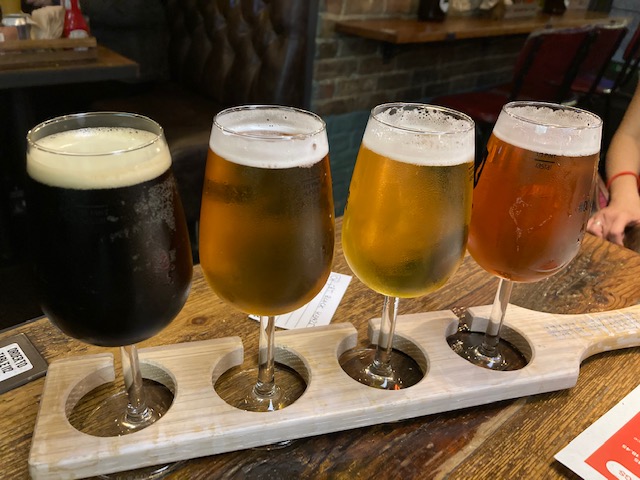Beer Color Calculator
This is a beer color calculator for predicting beer color in homebrewing recipes. The grist or malt extract is the main source of color in beer. Secondarily, length and intensity of boiling also has an effect on color. The longer and more intense the boil, the darker the color. Post bottling, age and oxidation tend to increase darkness.
Beer color prediction is limited to common ingredients. The use of fruit is usually outside of any color prediction beyond the obvious layman’s descriptions (i.e. raspberries in a pale beer will make red.)
Color Units in Brewing
The three most common measurement units for color in brewing are:
- EBC are color units derived from the European Brewing Commission method. EBC units are used for describing both grist and beer color outside the US.
- SRM are color units derived from the Standard Research Method set by the American Society of Brewing Chemists (ASBC). SRM units are used for describing beer color in the US.
- °L or Degrees Lovibond is an older method on which the SRM is based. It is most often used in describing the color of malt, not beer as with EBC and SRM.
Measuring Beer Color
Beer color is usually what makes the first impression on someone as they approach a pint, irrespective of their knowledge of beer. For the experts though, the impression of color is one of many characteristics that define a beer.

Color data is often included in the specifications of a malt and is provided by a Maltster. EBC and SRM units are calibrated in the laboratory and measured with a light spectrometer. For Degrees Lovibond, since it’s a much older system, it is defined by a standard set of slides. Practically speaking though, measurement of beer color in settings such as beer judging competitions use simple methods such as:
- Ensuring measurements are in a clear glass that’s large enough for light to go through enough beer
- Using natural (full spectrum) lighting
- Placing a white piece of paper behind the glass
- Comparing the beer color to a color chart.
